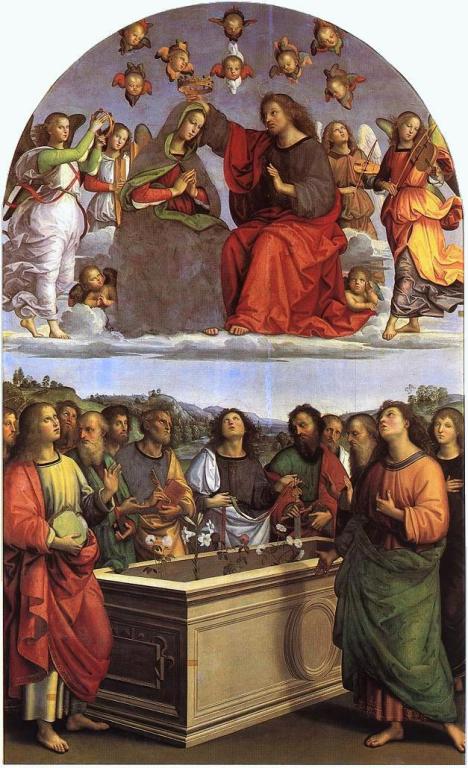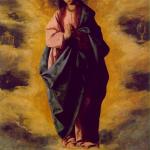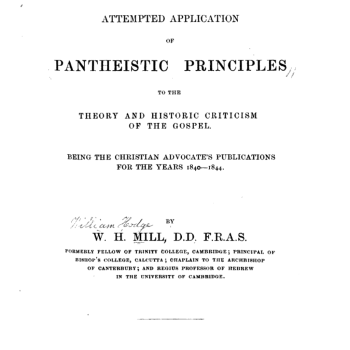
This is one of my many critiques of the book entitled, Roman but Not Catholic: What Remains at Stake 500 Years after the Reformation, by evangelical Protestant theologian Kenneth J. Collins and Anglican philosopher Jerry L. Walls (Grand Rapids, Michigan: Baker Academic, 2017).
*****
Collins, in his chapter 15: “Mary: Why She Matters,” note that Catholics started referring to Mary as the Queen of Heaven. In footnote 33 for the chapter, readers are referred to “pagan use” of the term in Jeremiah 7:18; 44:17-19, 25. Eerdmans Bible Dictionary, under “Queen of Heaven” mentions these exact references (which may indicate that the authors got them from this source). The idea was to burn incense and offer libations to these female deities, under the polytheistic conception.
The same source notes that this practice was connected to the Assyrian goddess Ishtar, and may have come into Judah via King Manasseh (2 Ki 21:3, 5; Asherah in RSV; Phoenician goddess Astarte). King Josiah’s reform ended such idolatrous practices (2 Ki chs. 22-23).
Collins decries the fact that Vatican II (Lumen Gentium, 66), “without any biblical warrant” [my emphasis] and supposedly drawing only from “what it has called Holy Tradition” proclaimed that Mary was “exalted above all angels and men to a place second only to her Son, as the most holy Mother of God . . . She is rightly honored by a special cult in the Church.” He mentions the fact that James and John wanted to sit at Jesus’ right and left hand (cf. Mt 20:21-23; Mk 10:37, 40) and that Jesus said that the Father determined that.
But that doesn’t logically rule out the possibility that Mary could sit at His right hand. Indeed, in Matthew 25:33-34, Jesus says that the entire class of people who are saved are at His “right hand.” Then he implies that it is beyond absurd that the Catholic Church has declared that Mary sits at Jesus’ right hand, without, of course, “any” biblical rationale for this judgment, as they stated earlier in the paragraph.
But he completely ignores the significant biblical motif of the “Queen Mother.” It’s by no means merely a Catholic invention of late centuries. It’s a thoroughly biblical theme, as noted by any Bible Dictionary. Thus, International Standard Bible Encyclopedia has a long article on it, which is available online (I cite most of it):
(gebhirah, literally, “mistress,” then a female ruler, and sometimes simply the wife of a king (“queen,” 1Ki 11:19); in Da 5:10 the term malketha‘ “queen,” really means the mother of the king): It stands to reason that among a people whose rulers are polygamists the mother of the new king or chief at once becomes a person of great consequence. The records of the Books of Kings prove it. The gebhirah, or queen mother, occupied a position of high social and political importance; she took rank almost with the king. When Bath-sheba, the mother of Solomon, desired “to speak unto him for Adonijah,” her son “rose up to meet her, and bowed himself unto her, and sat down on his throne, and caused a throne to be set for the king’s mother; and she sat on his right hand” (1Ki 2:19). And again, in 2Ki 24:15, it is expressly stated that Nebuchadnezzar carried away the king’s mother into captivity; Jeremiah calls her gebhirah (29:2). The king was Jehoiachin (Jeconiah, Jer 29:2), and his mother’s name was Nehushta (2Ki 24:8). This was the royal pair whose impending doom the prophet was told to forecast (Jer 13:18). Here again the queen mother is mentioned with the king, thus emphasizing her exalted position. . . .
And finally, the political importance of the gebhirah is illustrated by the fact that in the Books of Kings, with two exceptions, the names of the Jewish kings are recorded together with those of their respective mothers; they are as follows: Naamah, the Ammonitess, the mother of Rehoboam (1Ki 14:21; compare 1Ki 14:31, and 2Ch 12:13); Maacah, the daughter of Abishalom (1Ki 15:2) or Absalom (2Ch 11:20) the mother of Abijah; Maacah, the daughter of Abishalom, the mother (grandmother?) of Asa (1Ki 15:10; compare 2Ch 15:16); Azubah, the daughter of Shilhi, the mother of Jehoshaphat (1Ki 22:42; compare 2Ch 20:31); Athaliah, the grand-daughter of Omri, the mother of Ahaziah (2Ki 8:26; compare 2Ch 22:2); Zibiah of Beersheba, the mother of Jehoash (2Ki 12:1; compare 2Ch 24:1); Jehoaddin (Jehoaddan, 2Ch 25:1) of Jerusalem, the mother of Amaziah (2Ki 14:2); Jecoliah (Jechiliah, 2Ch 26:3) of Jerusalem, the mother of Azariah (2Ki 15:2) or Uzziah (2Ki 15:13,30, etc.; compare 2Ch 26:3); Jerusha (Jerushah, 2Ch 27:1), the daughter of Zadok, the mother of Jotham (2Ki 15:33); Abi (Abijah, 2Ch 29:1), the daughter of Zechariah, the mother of Hezekiah (2Ki 18:2); Hephzibah, the mother of Manasseh (2Ki 21:1); Meshullemeth, the daughter of Haruz of Jotbah, the mother of Amon (2Ki 21:19); Jedidah, the daughter of Adaiah of Bozkath, the mother of Josiah (2Ki 22:1); Hamutal, the daughter of Jeremiah of Libnah, the mother of Jehoahaz (2Ki 23:31); Zebidah, the daughter of Pedaiah of Rumah, the mother of Jehoiakim (2Ki 23:36); Nehushta, the daughter of Elnathan of Jerusalem, the mother of Jehoiachin (2Ki 24:8); Hamutal (Hamital), the daughter of Jeremiah of Libnah, the mother Of Zedekiah (2Ki 24:18). The exceptions are Jehoram and Ahaz. [I’ve italicized the Hebrew words and highlighted key portions in blue]
So we know — far from a supposed absence of “any biblical warrant” — that there is an Old Testament office of gebhirah or Queen Mother: mother of the king. The parallels to Jesus (also a king: of Whom King David was the major prototype) and His mother are obvious. The office was so high and important — second only to the king — that the names of the Queen Mothers are exhaustively recorded in Scripture.
Eerdmans Bible Dictionary (“Queen”) states regarding gebhirah that “in Judah and Israel apparently was always the mother or grandmother of the king” (1 Ki 15:13; 2 Ki 10:13; Jer 13:18; 29:2 [cf. 2 Ki 24:15] ). The New Bible Dictionary (“Queen”) confirms all this as well, adding:
The most important woman in the royal household, in Israel and Judah as in neighbouring lands, was the queen-mother . . . and [she] sat at the monarch’s right hand (Bathsheba, 1 Ki 2:19) . . .
Here are two Bible passages about the Queen Mother at the king’s “right hand”:
Psalms 45:1, 9 (RSV) . . . I address my verses to the king; . . . [9] daughters of kings are among your ladies of honor; at your right hand stands the queen in gold of Ophir.
1 Kings 2:19 So Bathshe’ba went to King Solomon, to speak to him on behalf of Adoni’jah. And the king rose to meet her, and bowed down to her; then he sat on his throne, and had a seat brought for the king’s mother; and she sat on his right.
Collins describes the Catholic belief in the “celestial enthronement” and “celestial crowning” of Mary in heaven: reiterated by Pope Pius XII in his encyclical, Ad Caeli Reginam (October 1954). He thinks that that is unbiblical as well. Yet New Bible Dictionary informs us that Nehushta, mother of King Jehoiachin was “crowned”. Here is the passage:
Jeremiah 13:18 (RSV) Say to the king and the queen mother: “Take a lowly seat, for your beautiful crown has come down from your head.”
Thus, we now have seen evidence for the sublime power of the position of Queen Mother, the fact that she sits at the king’s right hand, on another throne, and is even crowned. If this is true of mothers of kings, why not also of the mother of the King of Kings: the Mother of God the Son? It’s perfectly plausible, fitting, expected, and not in the least contrary to this relevant data that we have laid out. Catholic apologist Steve Ray has stated:
One cannot deny that Jesus sits on the throne of his father Solomon. Jesus is the ultimate Son of David who sits on the throne of David (and Solomon) and it would not be unbiblical or irrational or astounding to think that Jesus would do for his mother what Solomon did for his.
Steve Ray also wrote a wonderfully in-depth 30-page article entitled, “Understanding the Assumption and Queenship of Mary.”
***
Photo credit: Coronation of the Virgin (1504), by Raphael (1483-1520) [public domain / Wikimedia Commons]
***













